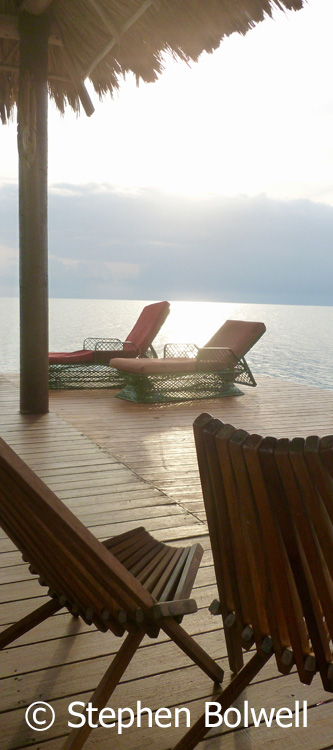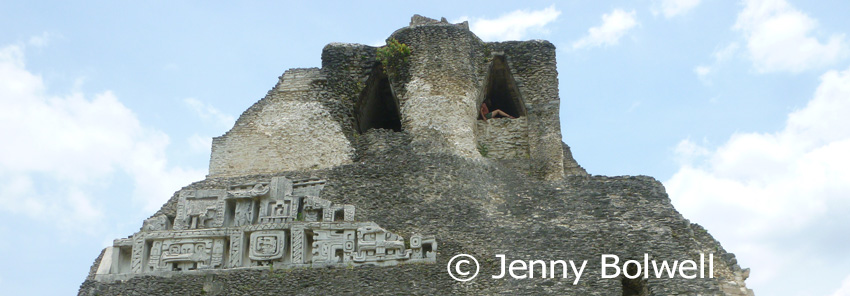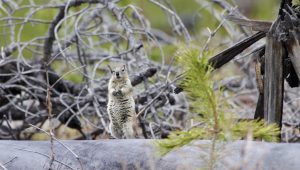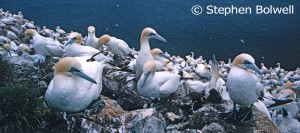Within half an hour, we are moving along an empty road, the sun now throwing the surrounding countryside into an intensity of colour that is seldom seen outside of the tropics. Driving westward, we move away from the coast into the interior, travelling across the entire country in just a couple of hours from our base in Hopkins to arrive at our destination – the Mayan ruins of Xuanantunich on the Mopan River, close by the Guatemala border.
My childhood was busy with stories of such places. At ten years of age I regularly imagined myself to be an Indiana Jones, although it could only have been an approximation because the intrepid archaeologist had not then been invented; whoever I thought I was cannot compare with the present reality of finally arriving at an authentic Mayan ruin where the levels of exhilaration are pushed beyond any fiction.

The archaeological site is only a few hundred metres from the ferry and there are a few people, mostly young backpackers, walking in along the road from the nearby town of San Ignacio. A few commercial outlets run along one side of the car park including a little gift shop selling Indian made items. It’s all pretty low key, but on our arrival there is a hell of a racket going on; my wife Jen, and daughter Alice are ignoring it as they lube up with insect repellant and sunscreen; I’m just keen to get moving because it is pushing towards mid-morning and getting hotter by the minute. The din is coming from close by the little shop, and I at once assume this to be a taped loop of howler monkey calls – it is quite deafening – certainly the loudest noise I’ve ever heard coming out of a monkey, but I don’t record it – this is so obviously a ploy to drag people in to buy trinkets, small things that will end up hidden away in the backs of a drawers that will be discovered by another generation during future tragic clear outs of the homes of the deceased.
Once on site and standing on the huge an impressive pyramid of stones know as El Castillo, I notice a guide who is taking a young couple around and I ask him about the monkey recordings. He is puzzled, and tells me that he doesn’t know of any recordings, but there are three troops of howlers roaming the area that sometimes kick up a fuss as they did this morning. At once I regret not recording all that wonderful howling. My wife on the other hand is delighted with my mistake because I really should have known better. She’s likes me to be wrong a couple of times a day and usually I can oblige.
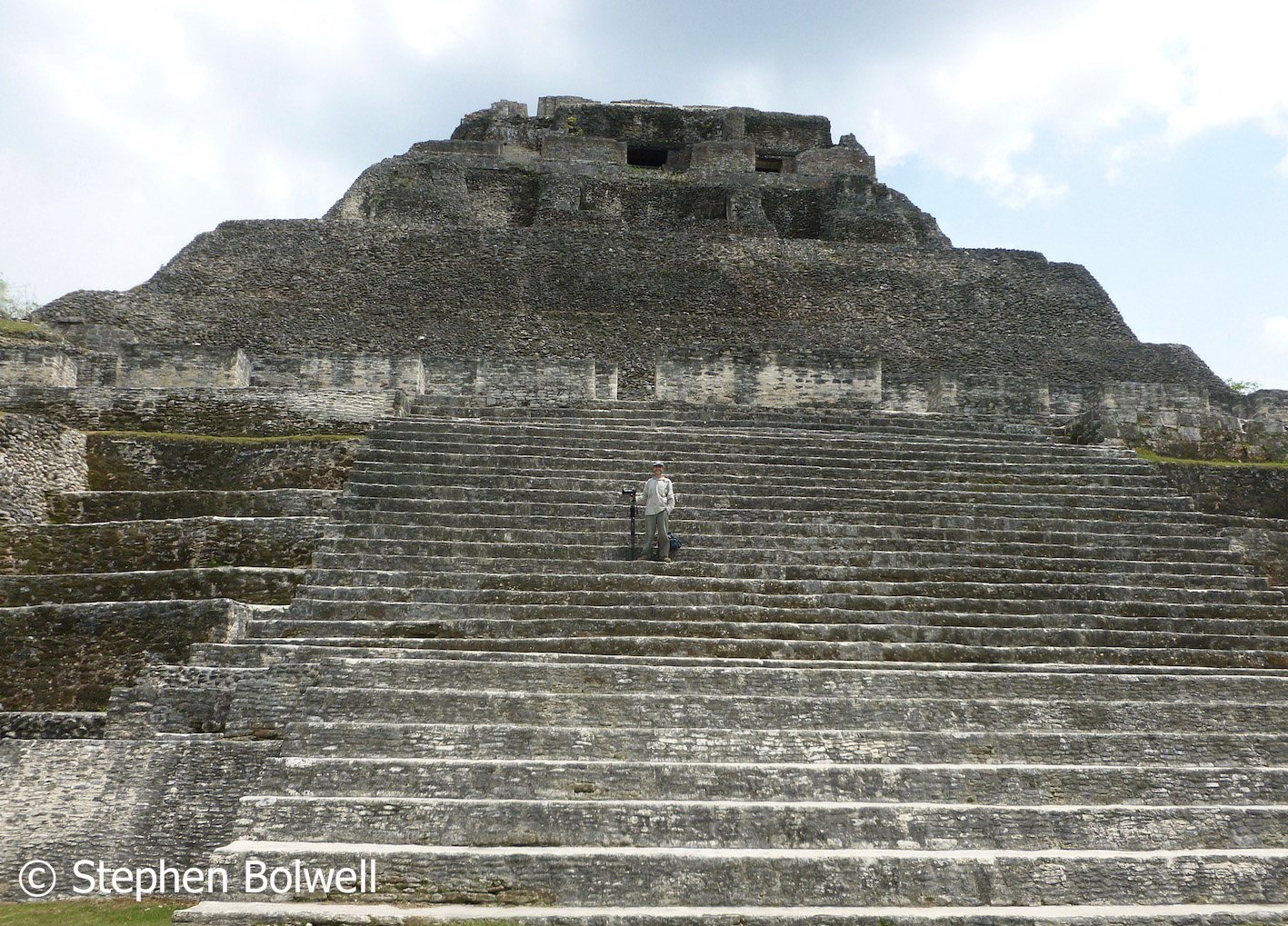
There are a group of teenagers and a couple egged on by friends are running along the facade and jumping the regular gaps in the stonework. Suddenly one falls heavily, it is a girl – she pretends that it didn’t hurt, but really it must have. My daughter is puzzled by the behaviour – “It seems very disrespectful”, she says, “but they don’t seem to be aware of it”. If this were Stonehenge, they’d have been arrested by now and carried away in a van, but here, where direct access is allowed to the monument, some lose all sense of what is reasonable as they go about expanding their version of personal liberty, this to the irritation of almost everybody around them and it also puts the fabric of the ruin in danger. A great pity, because presently there is enormous freedom on site to wander wherever you want without restriction, but as more people begin behaving as if their brains have dropped out, things will inevitably change to protect both the idiots concerned and the monument. Rules will be imposed – areas will be cordoned off, and the whole place will begin to feel more like a museum than the magical experience that it presently is.
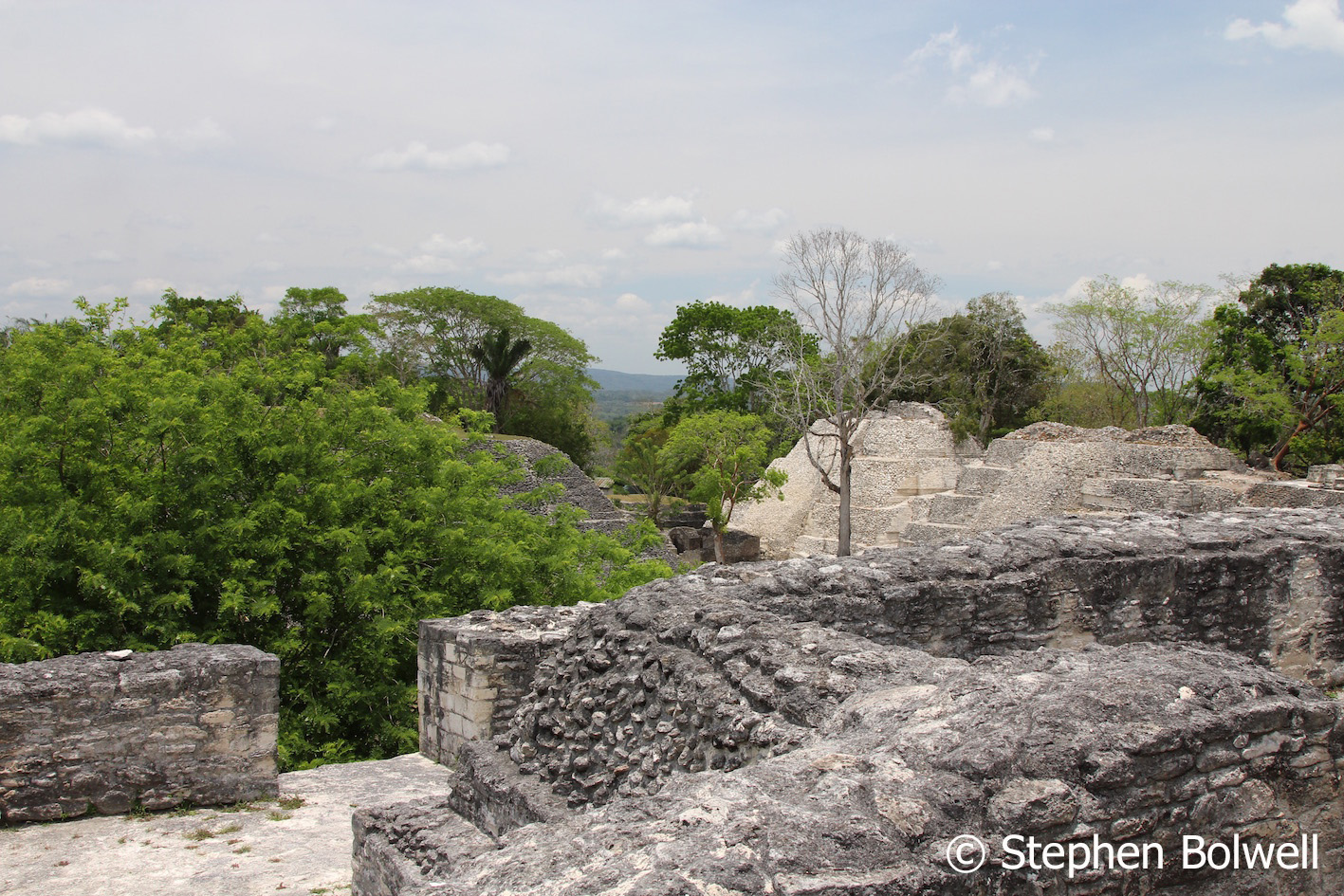
The pyramid El Castillo was probably in use as early as 800 A.D. it was constructed in two phases, and remains to this day very impressive, especially when you get close to the top. “You won’t get up there with all that gear”, my daughter says, which of course is like showing red rag to a bull (even if in the real world bulls don’t see red). Jen has already been defeated by the heat, she is feeling unwell, and has moved off without complaint to sit in the shade. Alice is already at the top; I am making my way there more slowly, taking pictures as I go and during the ascent begin to wonder how many have fallen from this huge pile of stones. In places the climb is steep and there is very little to grab on to, but once you get to the top the view is spectacular and well worth the risk – you can even see Guatemala – a broad white track indicates the border; and my daughter and I take in the scene as if we are looking down on a huge map.
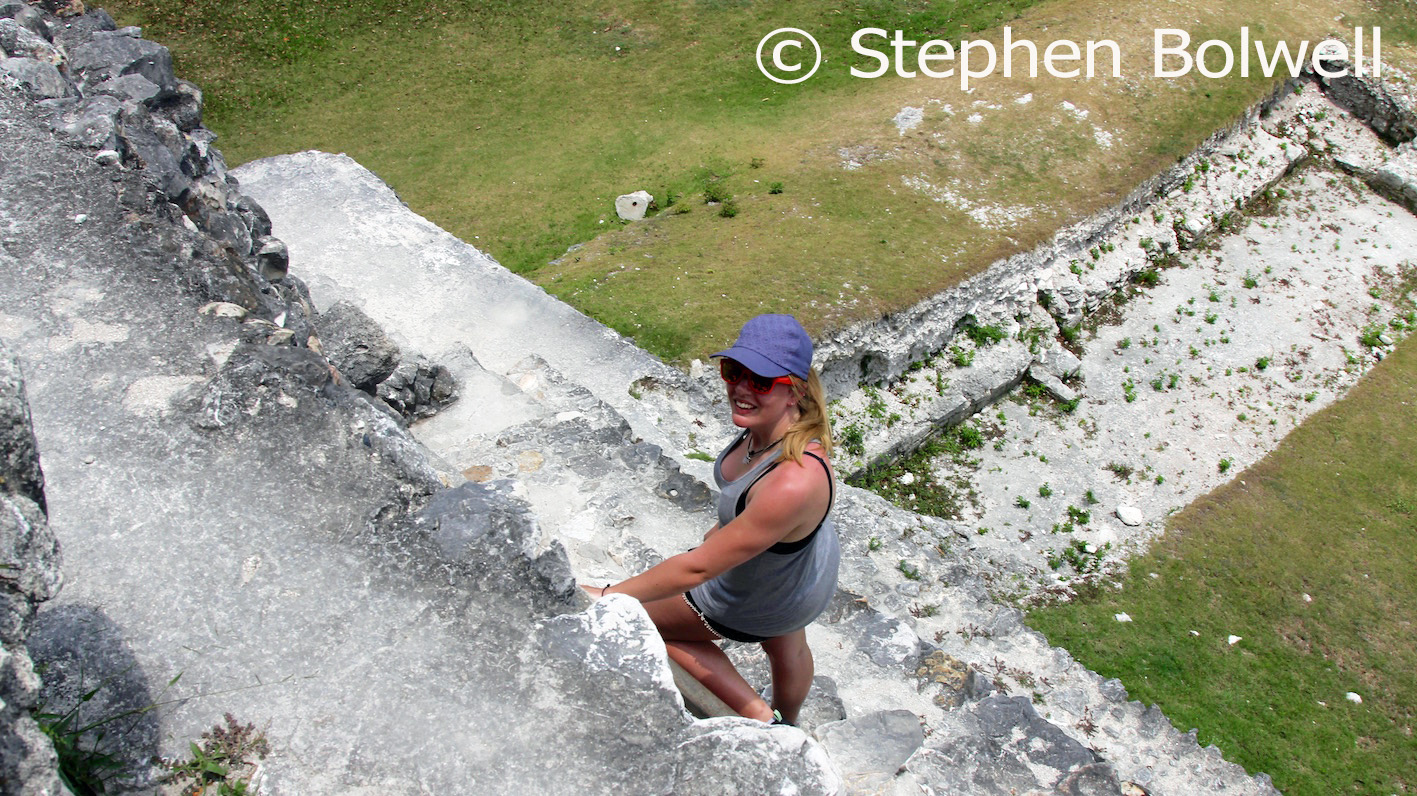
As Alice climbs down. I stay up for a while and continue to take pictures. It isn’t long before I pass a couple of young men who have noticed a large iguana over the edge of the front facade. You really have to lean out to see it – it’s a monster and I imagine that its ancestors were living on these walls when Mayan rulers were making blood sacrifices of their slaves… and perhaps when things weren’t going so well… their local people. Making human sacrifices was considered a real problem solver when negotiating with the gods. According to a guide that I spoke to, a game was played here annually in the square below and the winning team were granted a short celebration before they were executed. This hardly seems fair and I have no idea if it really happened… but it makes a good story. At modern sporting events this custom might still prove popular with the fans. Any team losing to Manchester United for example, might feel inclined to look on the bright side, but in today’s world this old custom would prove impractical because as entertaining as it might seem, executing a whole team would be far too expensive.
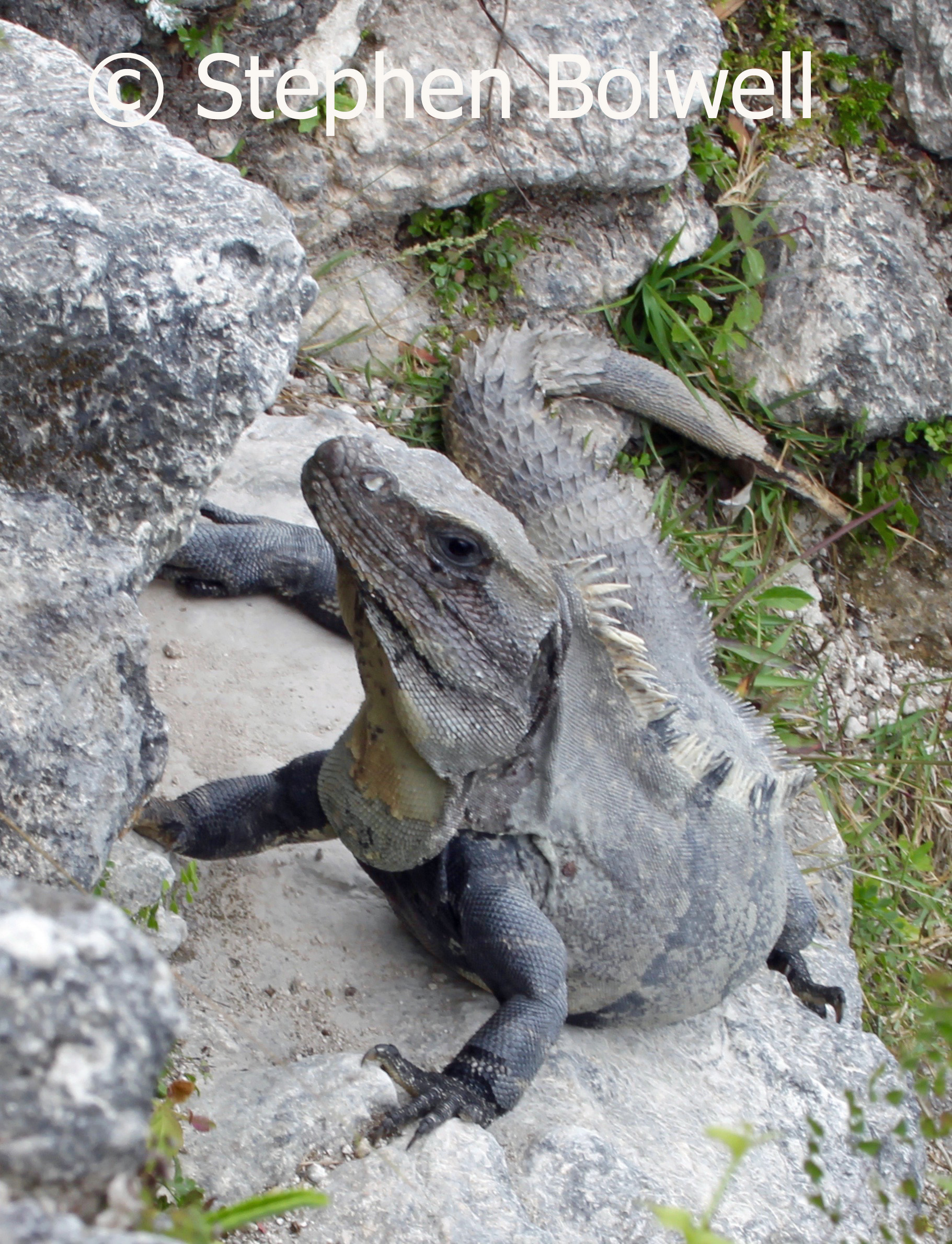
A woman is passing and I tell her about the impressive lizard. I’ve already tempted fate by setting my tripod up on the edge of the ledge and leant out for a series of pictures, my balance is not as good as it once was and now I’m generally more careful incase things go wrong. Anyway, this pleasant middle aged lady also seems interested in getting a shot, and so after a brief discussion on the safest way to achieve this, I take her full weight by holding onto her left arm as she leans out to take her picture. And all I can think as I do this is, ‘If I let go she’s a goner’ – but I don’t do that… Why would anybody trust a complete stranger like this? “Trust me I’m a wildlife photographer…. That’s just like being a doctor isn’t it? – You know, a really reliable sort?… Maybe not.”
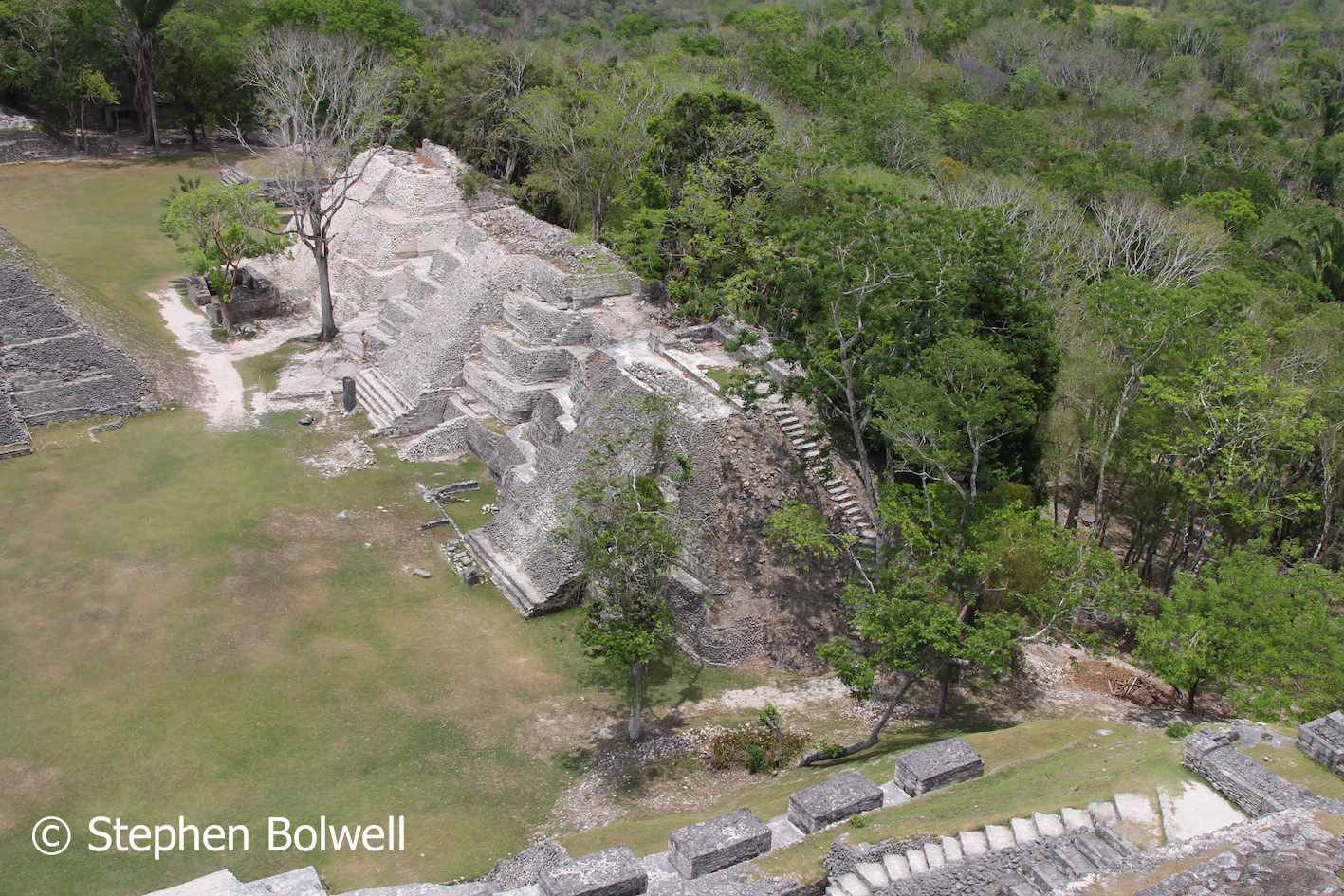
It’s very hot, but the day just goes on warming up, and by afternoon we pretty much have the place to ourselves – there are no mad dogs here just three English people out long past the mid-day. Noel Coward makes no mention of the extreme heat of afternoon in his song, probably because it doesn’t scan and would make no sense unless you experienced it, as we are doing today.
Late in the afternoon our wander around this wonderful square mile is complete and we begin to make our way back to the car. As we walk I check for the car keys that are no longer in my pocket. This is unusual. Sure, I lose my keys around the house, but never in a place like this, miles from anywhere. Usually I’m more careful. The site is now closed and Jen waits in the visitor’s centre while my daughter and I retrace my steps. Alice suggests that I visualise my journey like a child, which really isn’t my sort of thing, but it’s not bad advice; because as I get to the final location I remember upending myself to 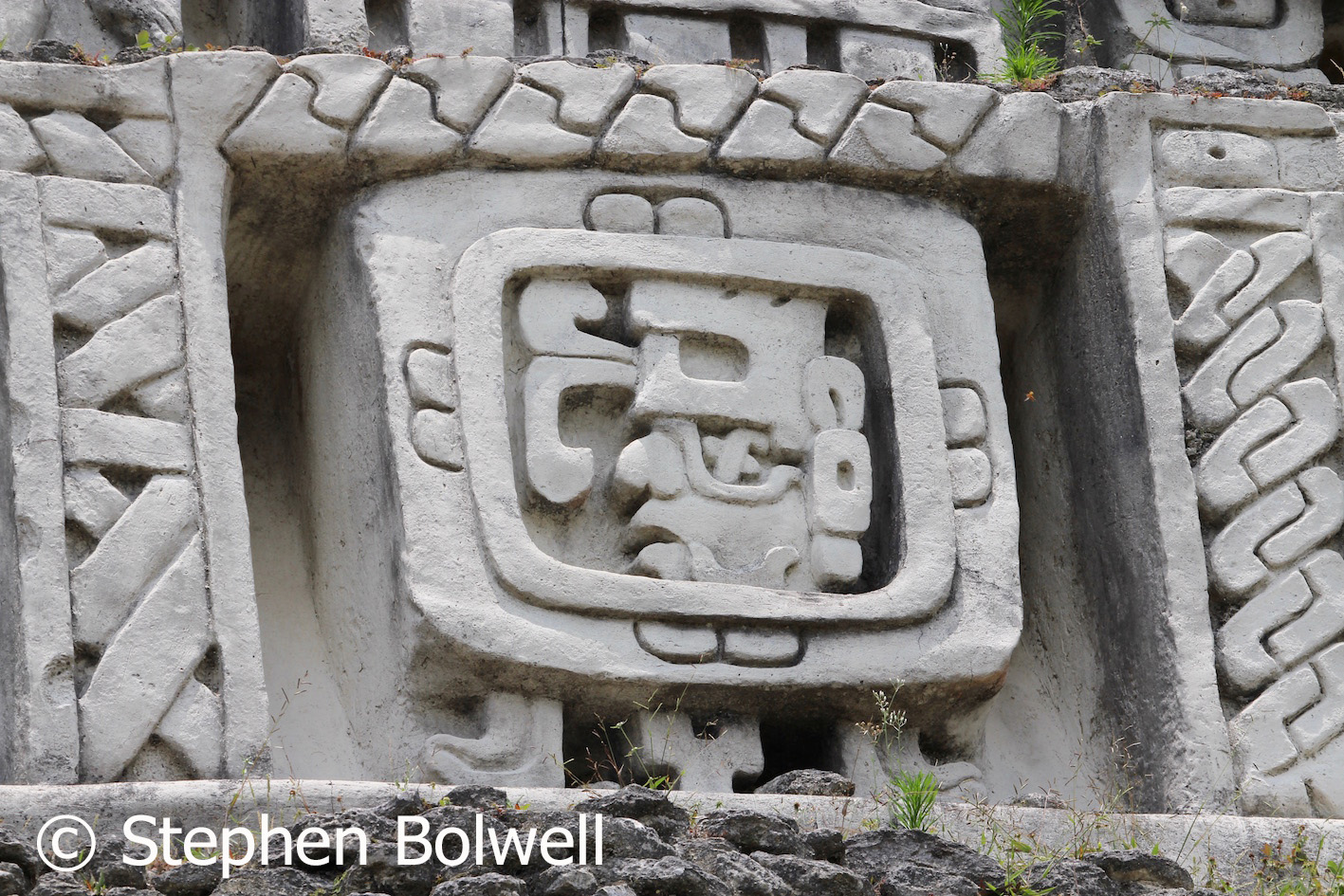 get a shot for an old American couple, with the ruins in the background – I’m certain my keys are there. I speed up a little in anticipation as the sun begins to dip over the stone facade. And sure enough there they aren’t… but moving 10 metres on along the terrace, there they are, lying on a step in an almost identical location, sparkling in what remains of the sunlight like Mayan treasure – although presently, they are of greater value to us than Mayan gold.
get a shot for an old American couple, with the ruins in the background – I’m certain my keys are there. I speed up a little in anticipation as the sun begins to dip over the stone facade. And sure enough there they aren’t… but moving 10 metres on along the terrace, there they are, lying on a step in an almost identical location, sparkling in what remains of the sunlight like Mayan treasure – although presently, they are of greater value to us than Mayan gold.
The lost keys! … my second mistake of the day. after the earlier monkey business I should once again have known better, but Jen doesn’t make a fuss as I might have have done had it been her or Alice who had lost them. Getting ‘it wrong’ twice in a day is enough, better still there is the relief of finding the very thing that starts the vehicle which is absolutely essential if we are to avoid being be stuck out here overnight.
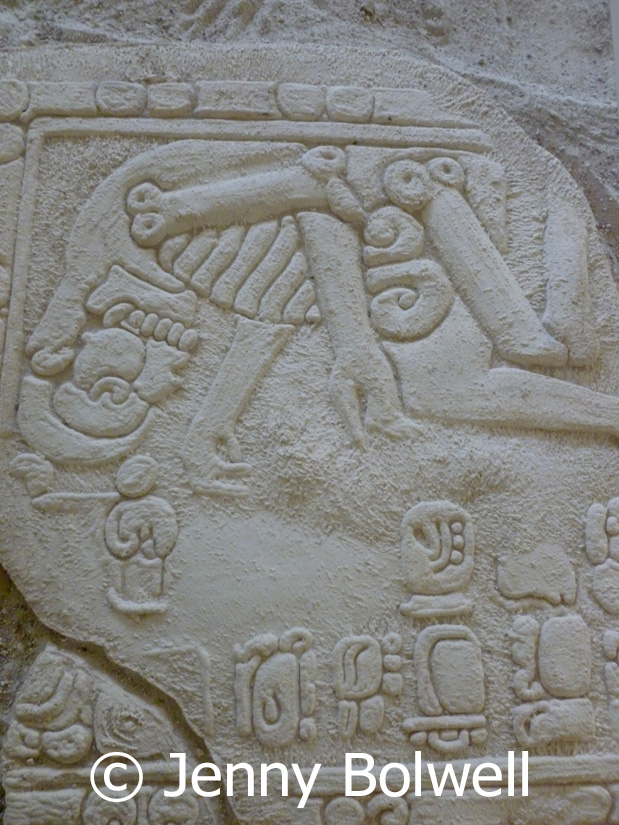 Quite by co-incidence the day after returning home I met somebody who has also visited the Mayan ruin of Xuanantunich, but he also visited another site across the border in Guatemala where things had gone badly wrong and put our recent experience into perspective.
Quite by co-incidence the day after returning home I met somebody who has also visited the Mayan ruin of Xuanantunich, but he also visited another site across the border in Guatemala where things had gone badly wrong and put our recent experience into perspective.
Quite by chance a National Geographic photographer was covering the ruin for a feature in the magazine and asked my acquaintance if he would tag along because he spoke the local language. There was nothing unusual about the visit; rather prosaically it had been organised by a local hotel, but late in the day as the sun was setting, the photographer became increasingly absorbed with his picture taking and neither of them noticed the party moving away to return to the vehicle that would take them away from of the site. The pair were left stranded in the forest with with only a small torch and a mobile phone to light their way as the light began rapidly fading. They stumbled about in the darkness for some time and my acquaintance eventually found a trail that led to the road. On arriving back at the hotel they were both covered in insect bites and scratched and bruised by their encounters in the forest.
The concern at night in tropical forest is always that you might step on a 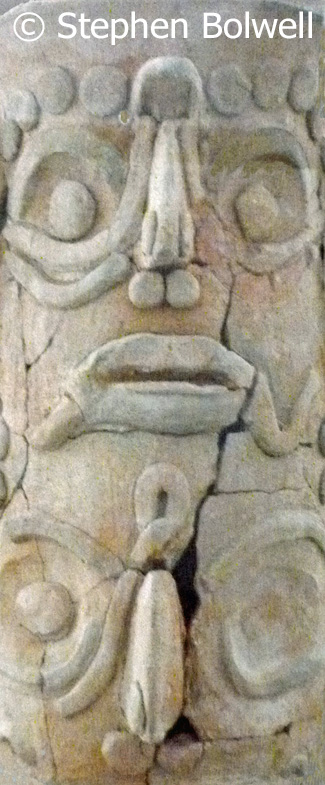 poisonous snake and this is not a wildly improbable scenario, but what most people worry about is the far less likely possibility of being attacked by a jaguar which can exert perhaps the strongest bite of all of the big cats – with their wide gape they will grab prey by the skull, and quickly pierce it with their impressive incisor teeth, but if this should happen, it would be all over before there was a chance to think much about it, and there’s consequently very little point in dwelling on such an unlikely scenario. Unfortunately, a tropical forest at night is so full of strange sounds, imagination quickly gets the better of you.
poisonous snake and this is not a wildly improbable scenario, but what most people worry about is the far less likely possibility of being attacked by a jaguar which can exert perhaps the strongest bite of all of the big cats – with their wide gape they will grab prey by the skull, and quickly pierce it with their impressive incisor teeth, but if this should happen, it would be all over before there was a chance to think much about it, and there’s consequently very little point in dwelling on such an unlikely scenario. Unfortunately, a tropical forest at night is so full of strange sounds, imagination quickly gets the better of you.
The Nat. Geo. photographer was apparently quite shaken up by his experience, which pleased me a little because I would sometimes come across one when filming for the B.B.C. in remote areas of the world. Stills photographers were usually carrying lighter gear than I was obliged to; and Nat Geo. photographers had more time and money to get the job done. The upside was that in some insect infested locations, the buget would limit my available work days and I would leave the Nat Geo photographer on site for perhaps another month. Sometimes it is just nice to be getting out of an extreme environment. There are many who imagine a job travelling as a wildlife photographer to be their ultimate dream, but when you are actually doing it and being eaten alive by insects, especially as night approaches, it’s a very different story; and if you are unlucky enough to get stuck out over night without being entirely prepared – it’s the ultimate nightmare.
I didn’t know at the time the keys went missing that the last ferry was supposed to be going at 4.00 p.m. otherwise I’d have been more concerned. We were now well past that time and would be departing later still because Alice had discovered a troop of howler monkeys (Alouatta) coming through the forest canopy on one side of the site just as we were about to leave.
I set up at the forest edge and although they are not calling, we can certainly hear them coming – gently rustling as they move through the trees stopping here and there to climb out along a branch to munch at the tips on fresh new leaves. It took about 20 minutes before they arrive at the edge of the clearing to reveal themselves from the dense foliage long enough for me to get a few shots. On the limits of exposure with the light now rapidly fading, I grab anything that I can, and what is most noticeable is that each monkey never allows itself to have fewer than three and often four points of contact with the tree; and when they stop to feed their tails invariably remain tightly wrapped around the main branch from which they are hanging.
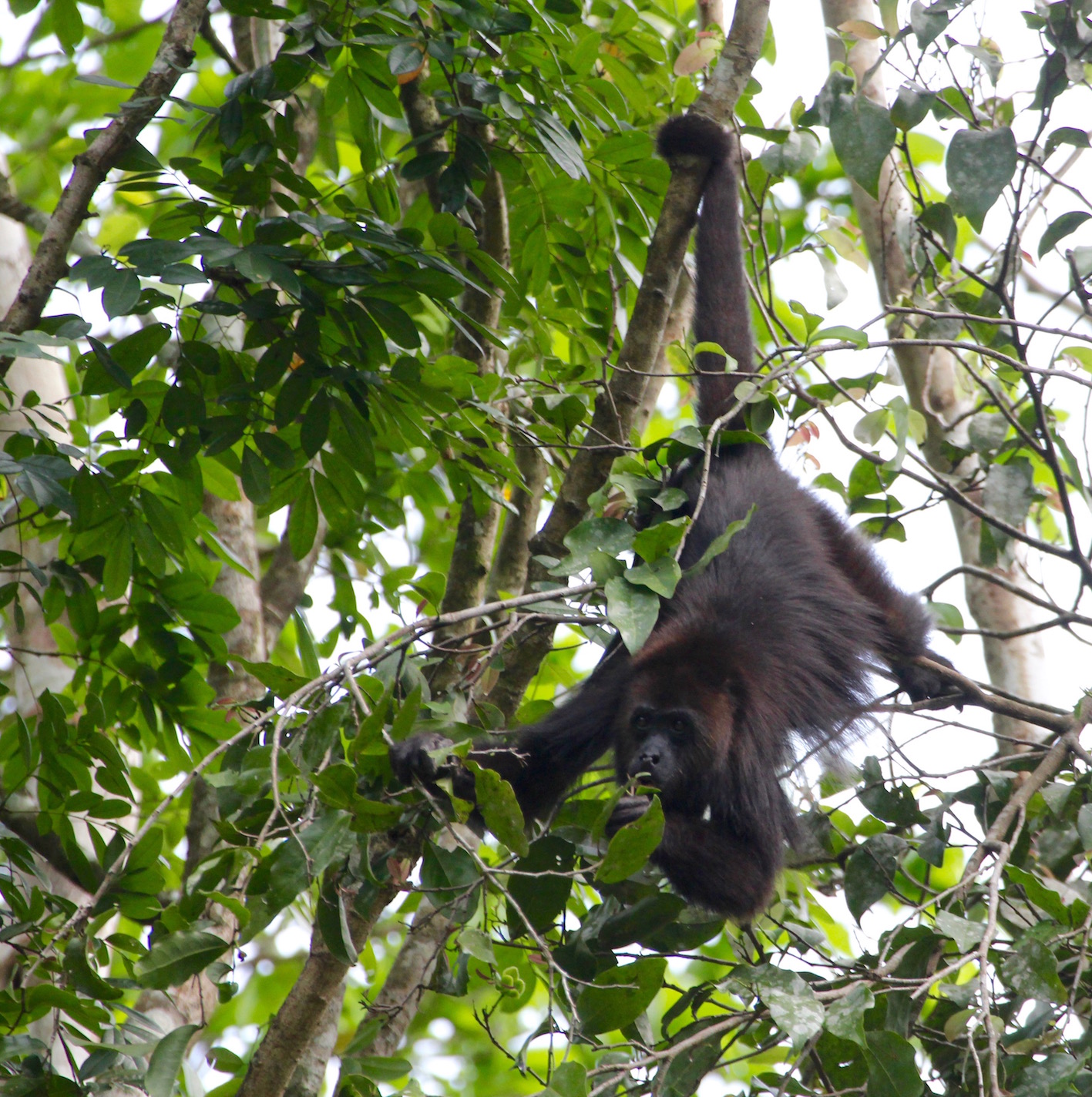
It is a surprise to be getting the best pictures I’ve ever managed of Howler monkeys and Jen, who prefers to look on the positive side when my mood so often swings the other way, points out that if I hadn’t lost the keys we’d probably have left the site before the howlers swung through. Their presence suggests the surrounding forest isn’t as degraded as it initially appeared to be, and a few howler pictures will make it difficult to deny that they were once here should they disappear sometime in the future. It is good once in a while to end on a positive note – and nothing is more positive or interesting than a bit of monkey business.
When we arrive back at the ferry it is on the other side of the river and I’m thinking that it might have stopped running for the day. I wave from the bank in the hope that it is still operating. The ferryman is certainly there and he sets the thing in motion. It’s always a good day when your experiences run against the natural course of entropy, because now and again, things are just bound to go your way.
With thanks to Mario Lemoine for his interesting story.
